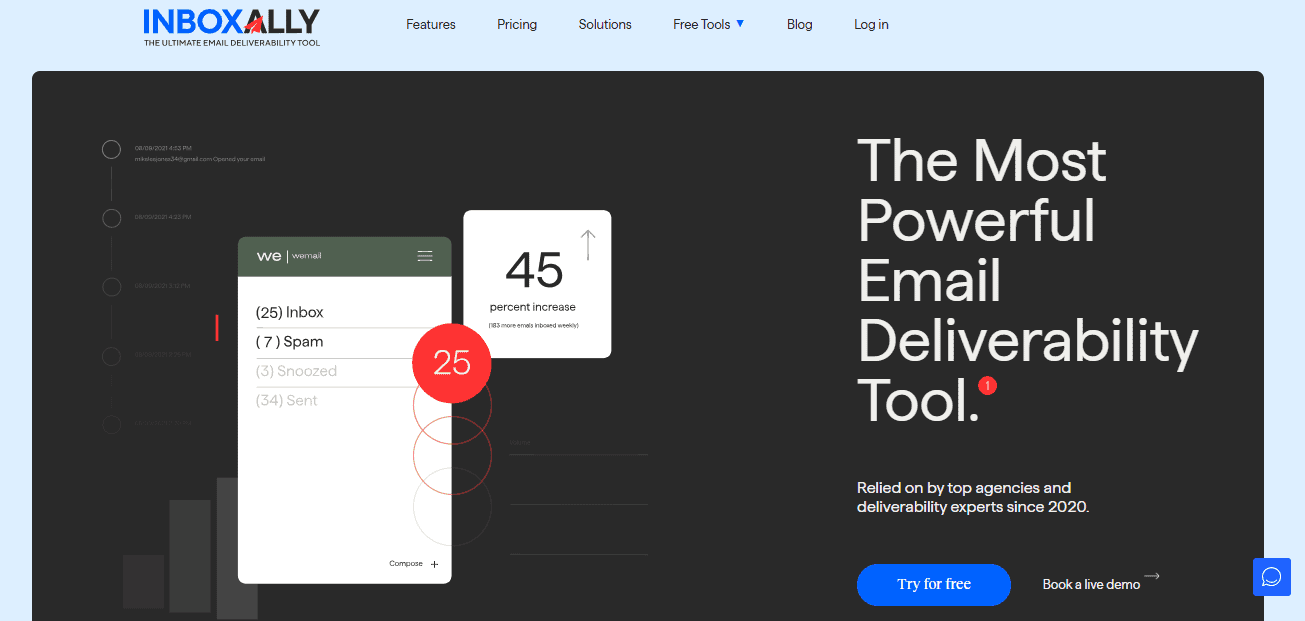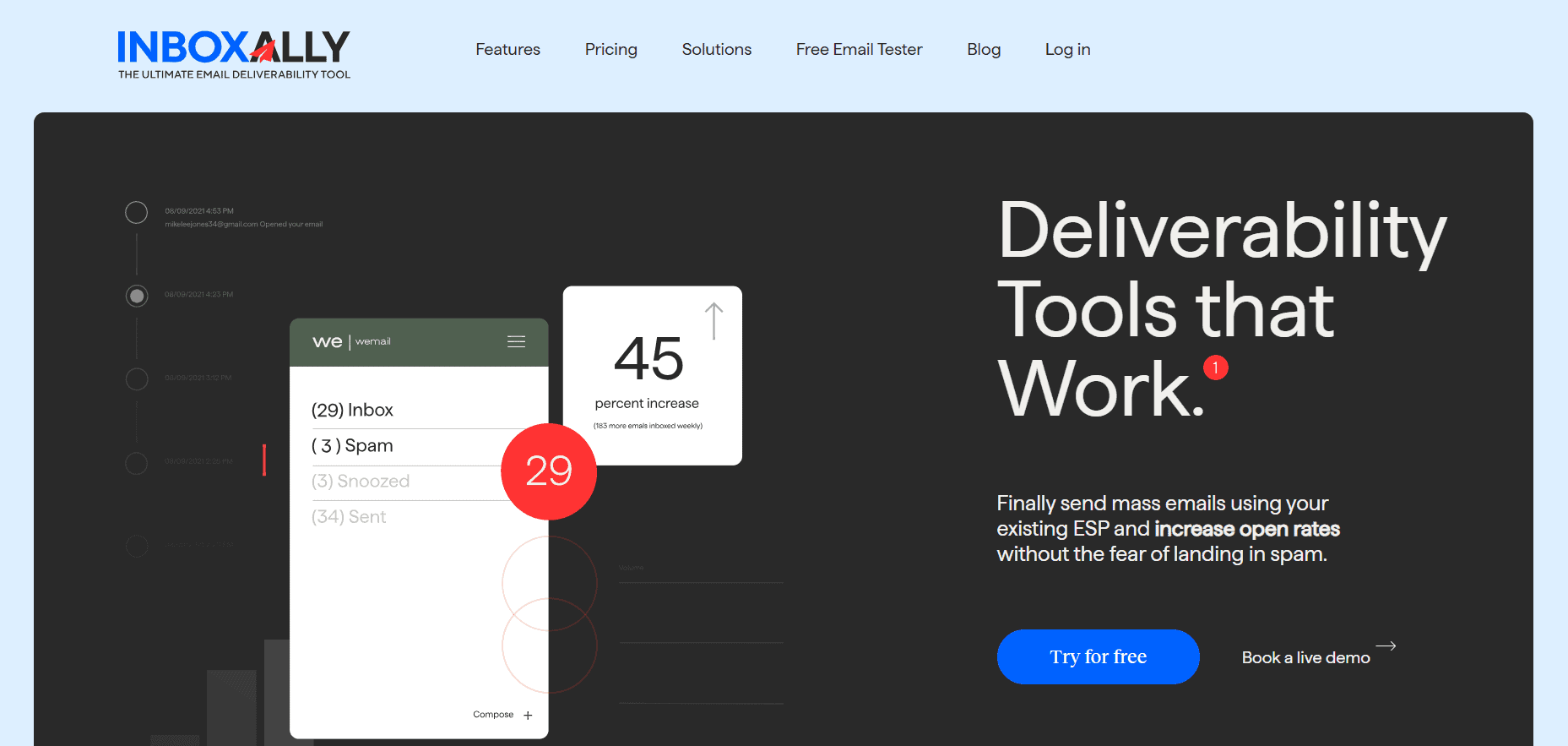- 1. InboxAlly – Best Deliverability Platform Overall
- 2. Warmforge – Best for Scale
- 3. Mission Inbox – Best for High-Volume Outreach
- 4. Warmy.io – Best for Automated, AI-Driven Warm-up
- Two features I liked the most:
- 5. Warmbox – Best for AI-Personalized Messaging
- 6. Lemwarm – Best for Lemlist Users
- 7. Mailivery – Best for customization
- Quick mentions: Mailforge / Inframail / Zapmail
- Final Thoughts: Don’t guess, do test
Last Updated on November 28, 2025 by Ewen Finser
TrulyInbox was like a dream tool when I discovered it. A cheap and simple warm-up tool you could get up and running in about five minutes. For a while, it worked exactly as expected. I’d connect a few accounts, monitor engagement numbers, and think I’d found the perfect low-cost solution.
But then I started scaling, and the rose-tinted glasses fell off my nose. It’s not that TrulyInbox is a bad product; it’s just not built for that level of load. It’s a starter tool that buckles under high volume.
Meanwhile, the deliverability world has moved on. The new generation of tools doesn’t just “warm” inboxes. These platforms track sender reputation, automate DNS records, monitor domain health, and do a lot more.
So I’ve tested a bunch of them, from quick, budget-friendly warm-up tools to enterprise-level deliverability engines, and some clearly outperform the rest. Here are the TrulyInbox alternatives that I’d recommend any day.
1. InboxAlly – Best Deliverability Platform Overall
If I had to pick just one tool to bet my whole email marketing workflow on, it’d be InboxAlly. TrulyInbox is great to start with, but InboxAlly is a full deliverability platform that ends up replacing a handful of other tools you’re probably already using.
I first turned to InboxAlly after TrulyInbox couldn’t explain why some campaigns still fell flat. I needed answers, and InboxAlly gave them to me immediately. InboxAlly offers placement testing (Primary, Promotions, Spam), live domain diagnostics, and detailed sender reputation tracking that shows why deliverability changes.
InboxAlly is the comprehensive suite I need to solve challenging deliverability problems across the board. It's like a triage hub for diagnosing and fixing email deliverability rates in one dashboard. I've tried a lot of tools, but this is the one I've stuck with.
Two features I liked the most:
- Placement Testing & Diagnostics – You can test across pretty much all ESPs to see exactly where your emails land.
- Domain Health & Authentication – Full checks for SPF, DKIM, DMARC, and BIMI with guided fixes when something breaks.
While TrulyInbox just keeps inboxes “warm,” InboxAlly is more of a reputation command center. You’ll also find:
- Advanced content scoring that marks spam triggers before you send an email.
- Engagement tracking in real time (opens, replies, clicks, forwards)
- Daily sender reputation reports

Who it’s best for: Agencies, ESPs, and enterprise senders that want nothing less than complete visibility into inbox performance, but also mid-sized businesses expecting a ramp-up in volume.
Pricing: Starts at $149/month per inbox (scales with team size). No free plans, but the ROI becomes obvious the moment your emails start consistently landing in the Primary inbox and conversions follow.
TL;DR: InboxAlly replaced TrulyInbox in my workflow — same goal, but a completely different class. My business became less about sending more emails and rather about making sure the right ones are delivered. If you treat deliverability as infrastructure, not luck, it’s easily the most meaningful upgrade you can make.
2. Warmforge – Best for Scale
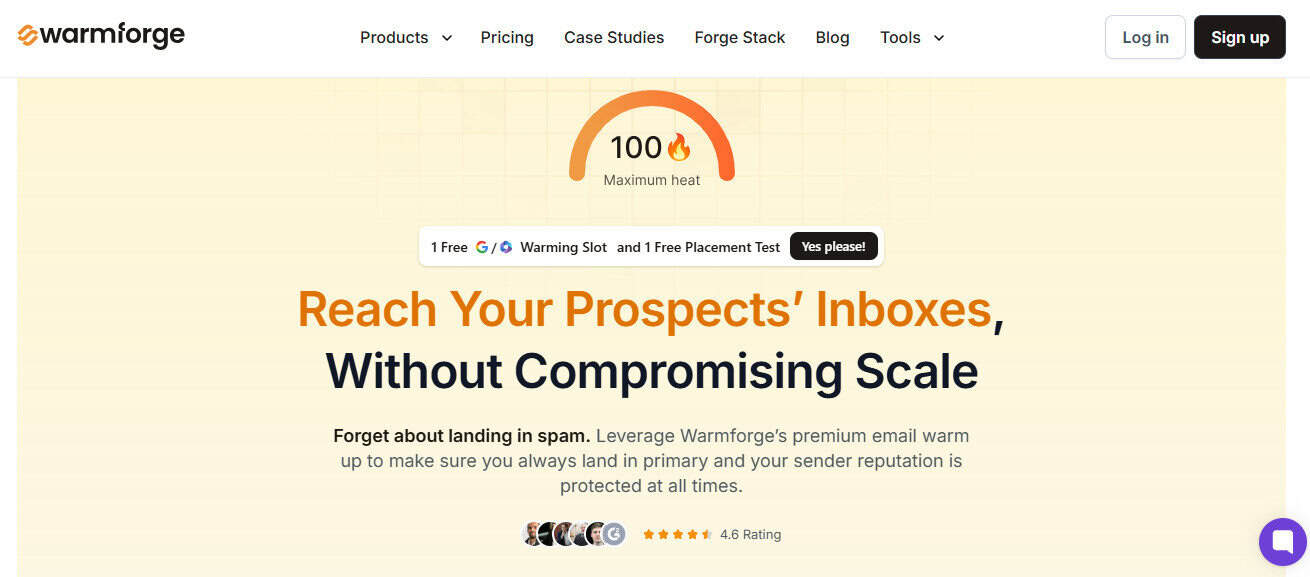
If you’ve ever tried running 30+ inboxes on a warm-up tool, you know the definition of confusion — random drops, failed sends, errors that make no sense. These issues are why Warmforge exists. It’s one of the few warm-up platforms I’ve used that stays stable regardless of my email volume.
I tried Warmforge with the purpose of overcoming the usual ceiling: manual DNS setup, no routing logic, poor visibility. Warmforge fixed all of that in one go. It helped me send from a few different domains and made nothing look suspicious. But, most importantly, it gave me proper inbox health data like spam scores, bounce tracking, open trends, the works.
Two features I liked the most:
- Auto DNS & Routing – You connect domains once, and it handles authentication and rotation intelligently without endless setup screens.
- Inbox Health Dashboard – You actually see how your senders are performing instead of hoping nothing’s on fire.
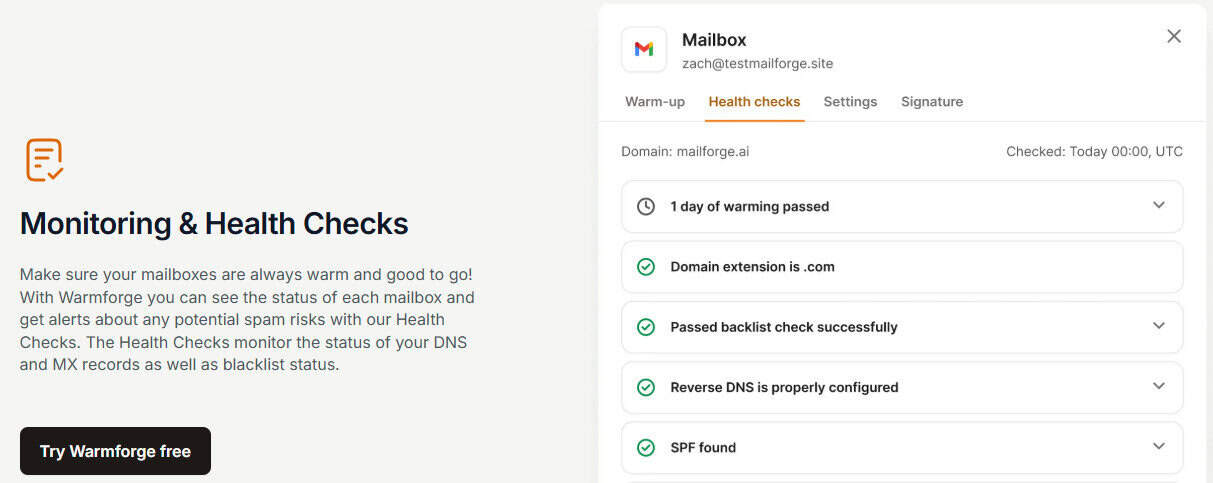
In my runs, inboxes warmed easily past 100+ accounts with zero drops and open rates going to around 60–70% by week four, granted it was a highly active list.
Pricing: Starts at $12 per inbox per month for warmup, plus $39/month for placement testing (or $32.5/month if billed annually), which I find fair considering how much control you’re getting. With higher volumes, the price can drop to around $3 per-inbox.
Who it’s best for: Agencies, lead-gen teams, or anyone managing more than a handful of inboxes who’s tired of guessing what’s going on in the background.
TL;DR: Warmforge feels like what TrulyInbox wanted to be: automated and robust enough to handle serious outreach. Once you’ve used it, going back to simpler tools feels like a massive downgrade.
3. Mission Inbox – Best for High-Volume Outreach
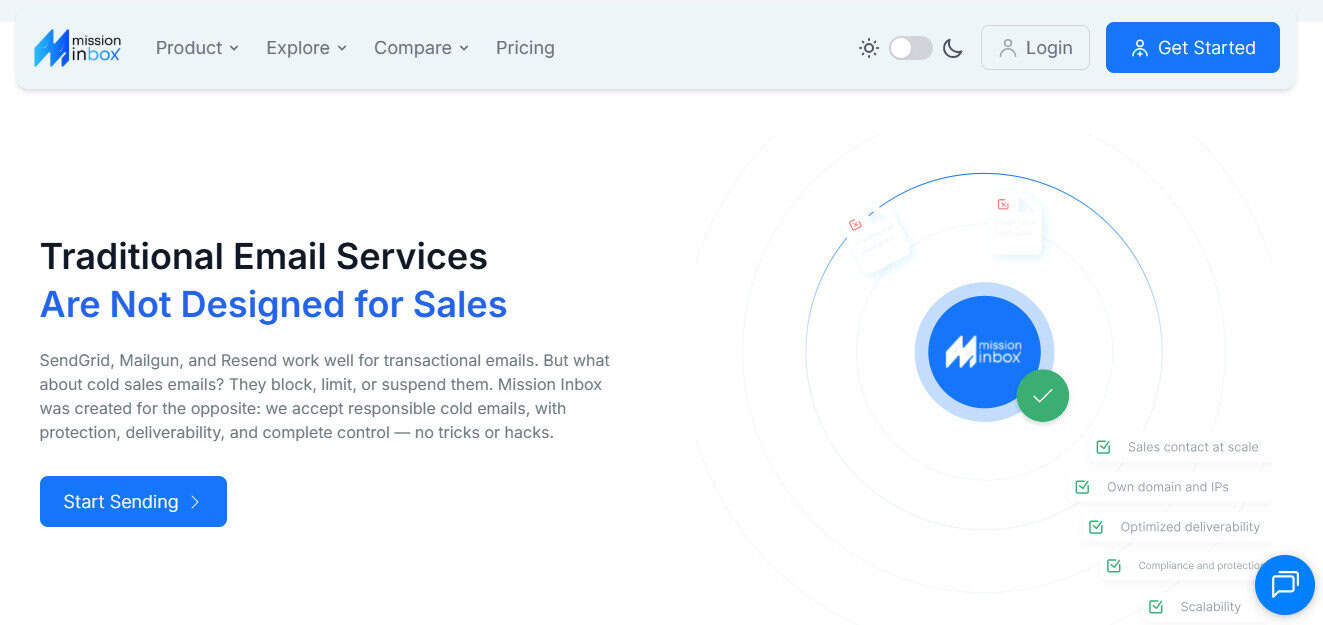
Once you start juggling dozens of inboxes with different domains, small tools stop making sense. At that point, you need something that monitors everything from sender reputation, DNS changes, to subtle deliverability dips and warns you before something breaks. Mission Inbox is one of those tools.
The first time I used it, I realized how blind I’d been before. Most warm-up dashboards show you averages and trends. Mission Inbox shows you anomalies. You’ll get notified if an IP starts triggering spam filters, or if your domain’s health drops below a threshold. It’s basically an early warning for your outreach stack.
Two features I liked the most:
- Live deliverability alerts – you’ll know within minutes if something starts going south.
- Inbox reputation scoring – not just pass/fail, but granular health data for every account.
Who it’s best for: Agencies or in-house teams with outreach at scale who’d rather have insight and precision than simplicity.
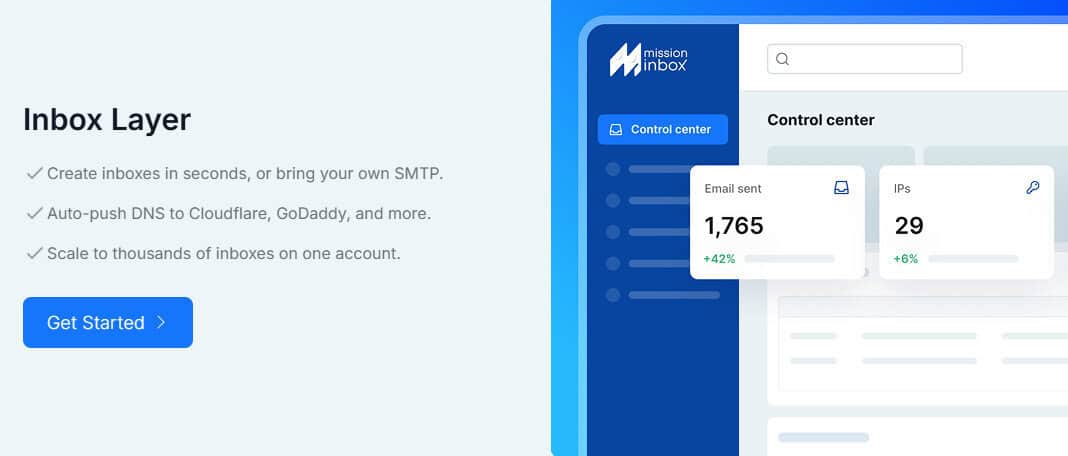
Pricing: Starts at $199/month for 30 inboxes, 10,000 sends, and full monitoring access. You can scale by adding inboxes for around $2–$3 per mailbox and $1 per thousand sends.
TL;DR: Mission Inbox is not exactly for hobbyists. The setup takes a bit of care, and the price reflects that. But once it’s up, you get a sense of calm that’s rare in the cold email outreach space.
4. Warmy.io – Best for Automated, AI-Driven Warm-up
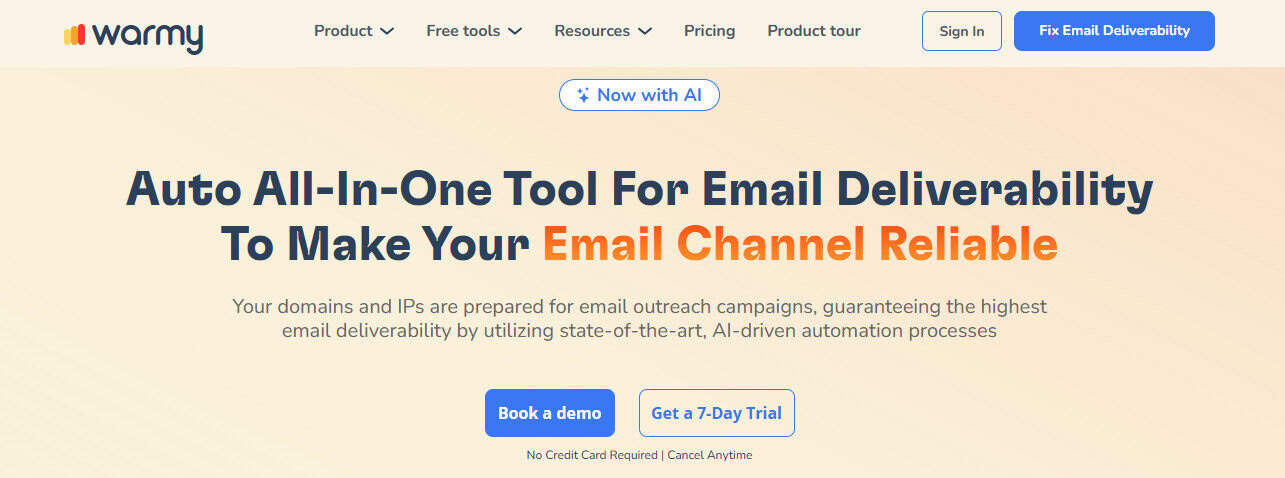
When I first tried Warmy.io, I expected another “set and pray” warm-up tool with decent automation but minimal control. However, I was proven wrong very quickly. Within days, it was adjusting send times, scaling volumes, and analyzing engagement patterns on its own. I had no manual tweaking or spreadsheets, and definitely no second-guessing.
For me, Warmy felt like it understands deliverability. While TrulyInbox does a great job at simulating activity, Warmy uses AI to build realistic engagement loops that I thought were genuine human behaviour. Emails get opened, scrolled, replied to, and marked as important by actual users.
Two features I liked the most:
- AI-powered warm-up – Warmy adapts automatically based on your sender reputation, pacing your volume increase naturally. It even learns from your results, which keeps deliverability improving week after week.
- Domain Health Hub + Deliverability Test – Before every major campaign, I can test inbox placement and domain health across pretty much all email service providers.
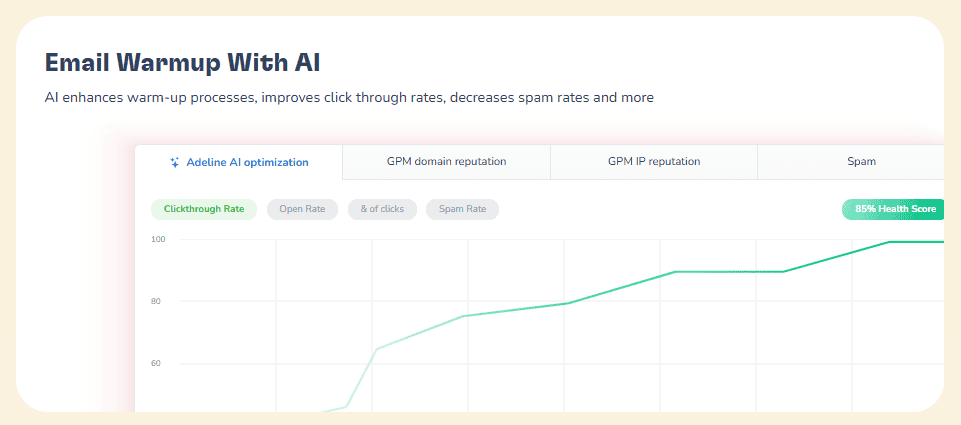
A few other things worth noting:
- Supports 30+ languages for global campaigns.
- Google Postmaster Tools integration for accurate reputation data.
- Free SPF and DMARC setup tools, so you can fix authentication in minutes.
Who it’s best for: Marketers, SaaS teams, and agencies managing multiple inboxes who want automation that doesn’t need babysitting.
Pricing: Custom plans with a free 7-day trial, starting at $19/month.
TL;DR: If you want a tool that handles deliverability while you focus on strategy, Warmy.io is definitely one of those you can trust.
5. Warmbox – Best for AI-Personalized Messaging

Warmbox caught me off guard in the best way. I’d seen plenty of tools promise “smart” warm-up before, but this one actually felt human. When I connected my first inbox, the warm-up emails it generated didn’t look like system chatter but like real messages — short, casual, and relevant enough that I had to double-check whether they were AI or human-written.
That’s the idea of Warmbox: it doesn’t just send random emails back and forth, it builds conversations. The platform uses AI to create topic-specific threads that make your email activity look organic. And the analytics dashboard backs it all up with data that I found incredibly useful.
Two features I liked the most:
- AI that personalizes warm-up conversations – Each warm-up message feels distinct. The AI adapts tone and context so your inbox looks like it’s part of a natural exchange.
- Private network of real inboxes – Every message comes from genuine, active mailboxes. That means the engagement Warmbox creates actually helps your sender reputation instead of faking it.
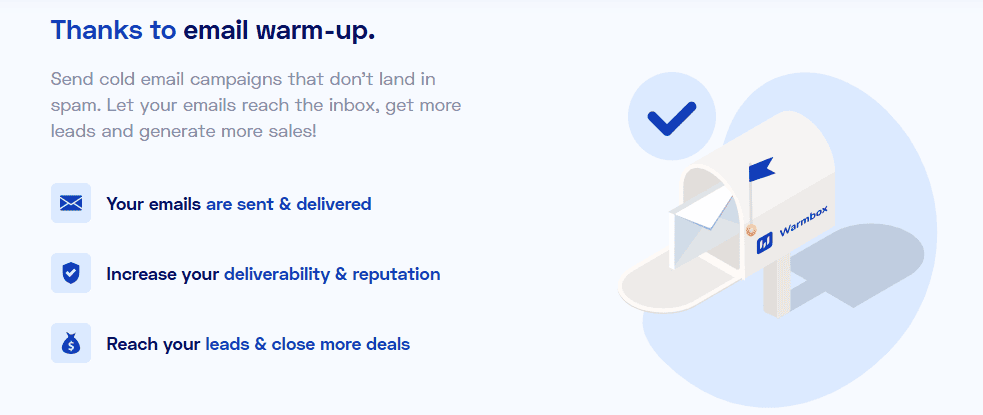
A few other things worth noting:
- Customizable warm-up templates.
- Real-time deliverability tracking.
- Works with any ESP (Gmail, Outlook, Zoho, even with SMTPs).
Who it’s best for: Cold emailers and freelance marketers who want realistic engagement patterns and human-like messaging.
Pricing: Starts at $15/month for one inbox and 50 emails per day.
TL;DR: Warmbox is one of the most believable warm-up tools out there. It’s perfect for authenticity, though not built for massive scaling.
6. Lemwarm – Best for Lemlist Users
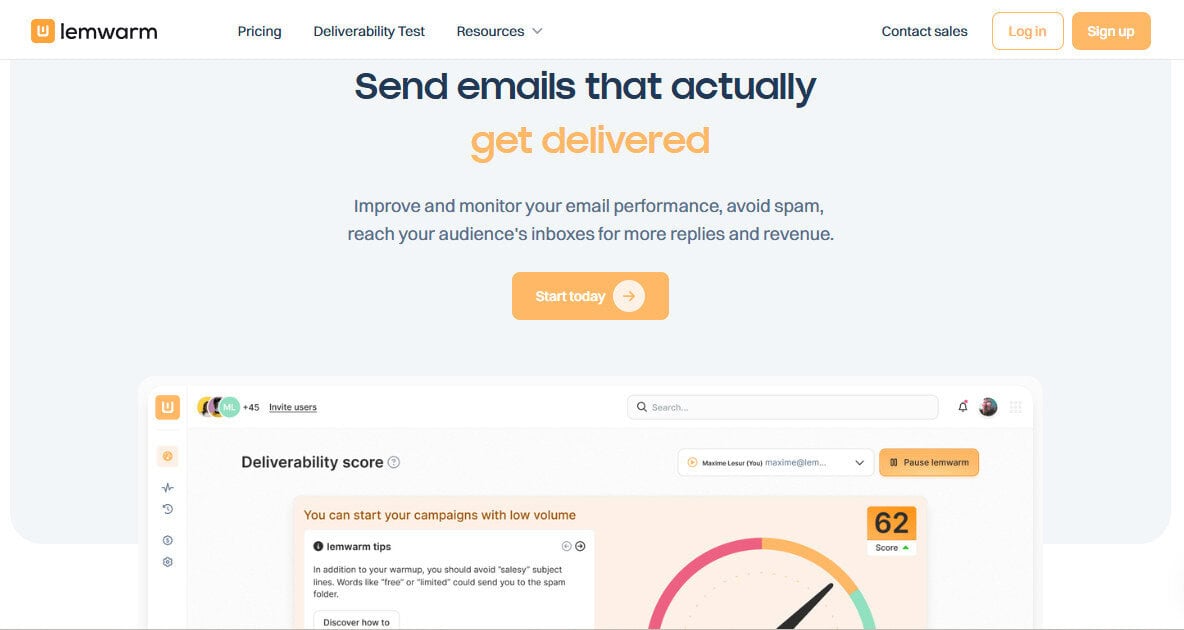
I started using Lemwarm mostly out of curiosity. I’d already been using Lemlist for cold outreach, and it made sense to try their built-in warm-up tool. What surprised me was its level of polish. It’s both simple and genuinely helpful if you like seeing what’s happening under the hood without analyzing endless reports.
Where most warm-up platforms hide data from you, Lemwarm’s dashboard gives you everything in real time. You can literally watch as your inbox reputation improves, see the complete email interaction, and be aware of issues before they become deliverability problems. It’s visual, precise, and easy to act on.
Two features I liked the most:
- Real-time monitoring – Lemwarm’s live dashboard updates constantly. You can see inbox interactions as they happen and measure improvements without waiting for daily reports.
- Personalized warm-up chains – Lemwarm’s network creates natural conversation-style exchanges that mimic human behavior, which improves your credibility with mail providers.
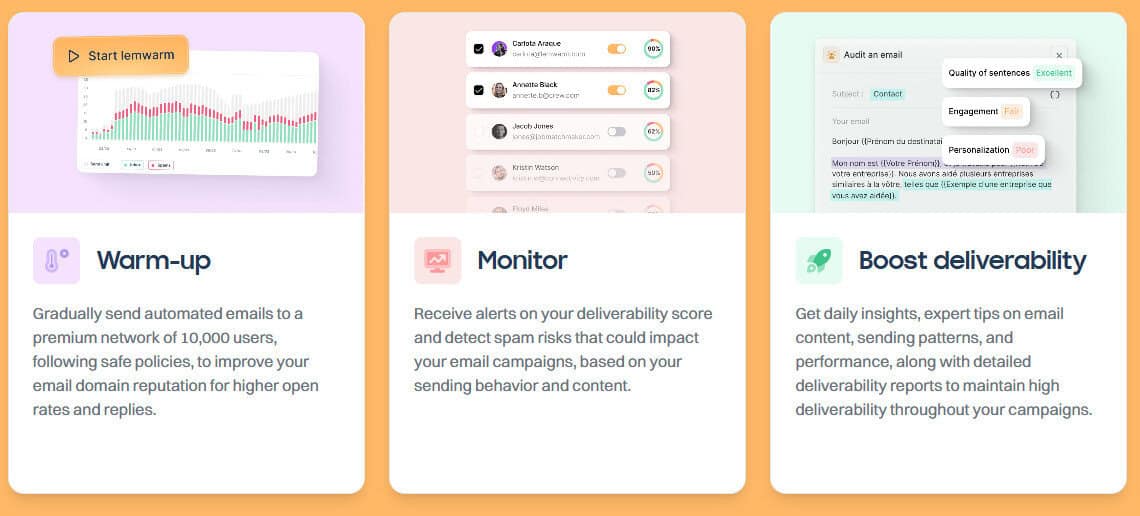
A few other things worth noting:
- Easy-to-read UI that makes analytics fun.
- Simple setup. It takes just a few minutes if you’re already in Lemlist.
- Full synergy with Lemlist campaigns, so you can go straight from warm-up to outreach.
Who it’s best for: Lemlist users or marketers who prefer clean reporting and simplicity over complexity.
Pricing: From $24/month (Essential) or $40/month (Smart).
TL;DR: Lemwarm is great if you’re already in the Lemlist ecosystem. It’s intuitive and data-focused, but it doesn’t overcomplicate the overall warmup process.
7. Mailivery – Best for customization
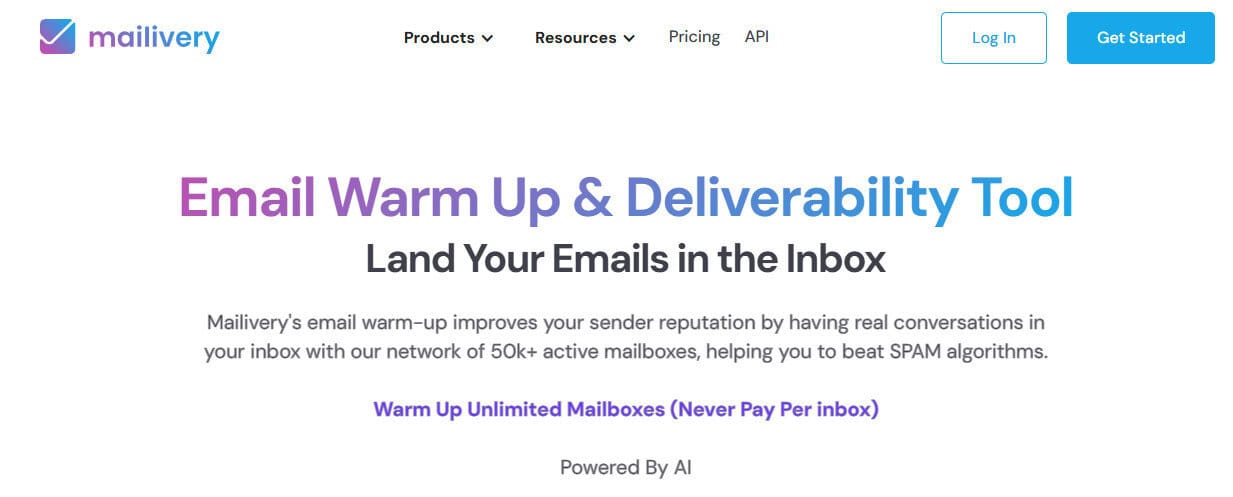
Mailivery was one of those tools I didn’t expect to like. I figured it’d be another AI gimmick, but after spending a week with it, I started to see why some deliverability pros swear by it. Most tools try to automate everything. Mailivery lets you design how your warm-up behaves. You can build custom templates, tweak engagement patterns, and decide how “human” you want your activity to look.
That level of control is something we marketers don’t see often. I’ve used it to mirror my actual cold email tone with the same phrasing, same length, same dynamic. With this, my inbox interactions looked exactly like my outreach messages, not like a separate warm-up thread that email providers could spot a mile away.
Two features I liked the most:
- Custom template creation – You can write your own warm-up messages or modify the AI-generated ones to match your tone and industry.
- Spam and blacklist monitoring – Mailivery runs regular checks on your sending domains and alerts you if your address or IP gets listed anywhere.
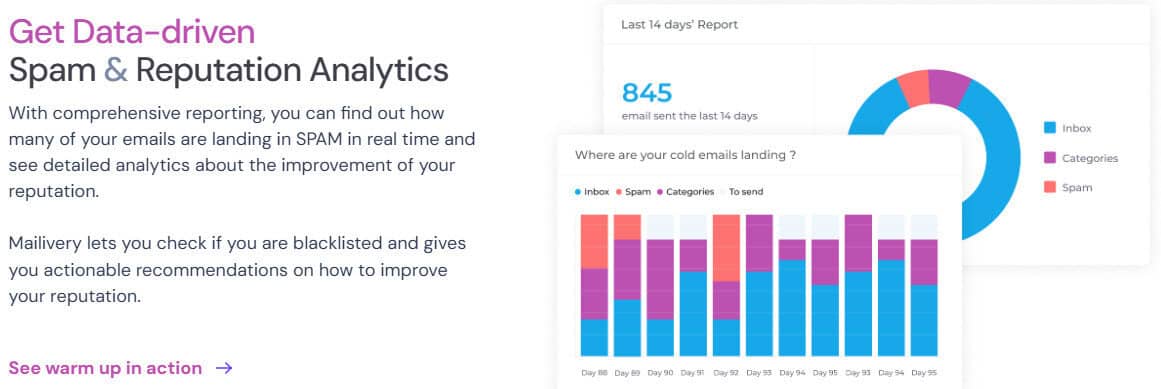
A few other things worth noting:
- AI-generated message threads that evolve over time.
- Works even without SMTP setup (plug and play with most ESPs).
- Broad integration range with cold outreach and CRM tools.
Who it’s best for: Demanding users and agencies that want total control over their warm-up flow.
Pricing: Starts at $29/month (Starter) and scales to $199/month (Business).
Bottom line: Mailivery gives you control. It’s completely hands-on and a great alternative if you like to fine-tune every detail.
Quick mentions: Mailforge / Inframail / Zapmail
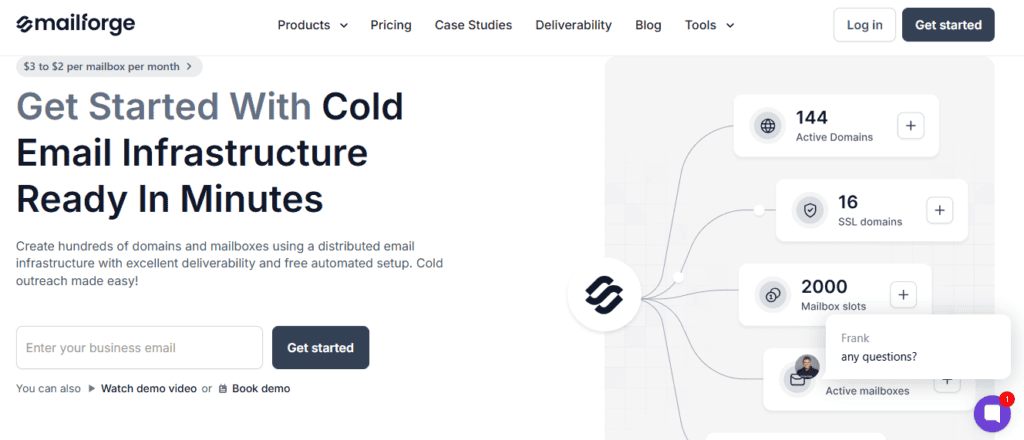
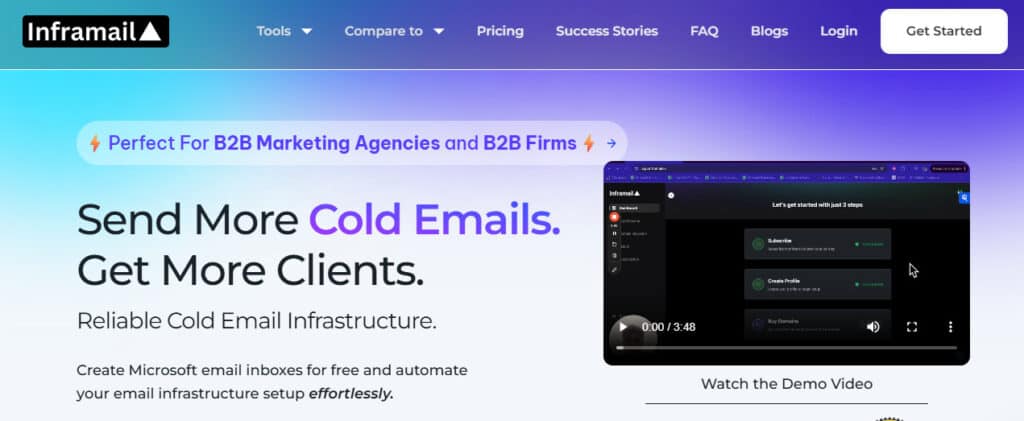
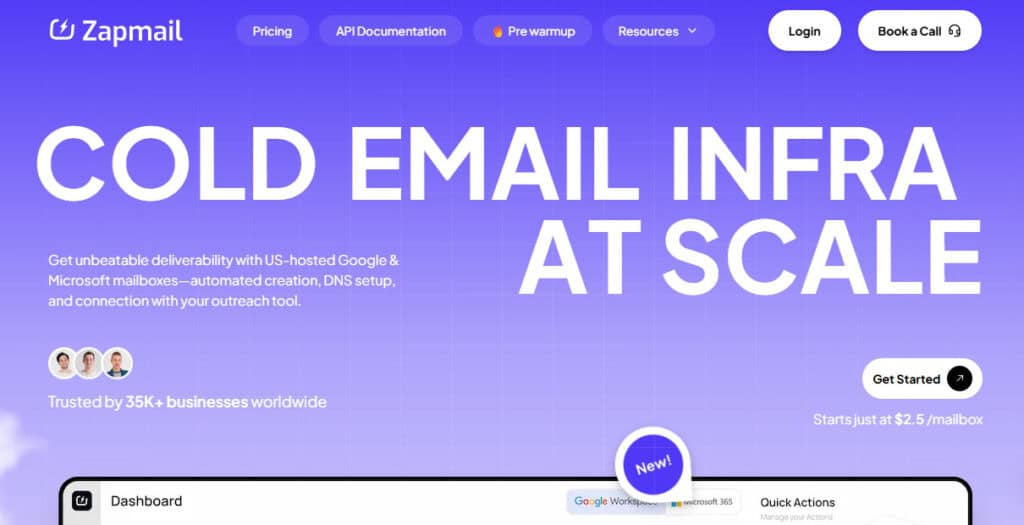
I’ve also come across a few tools that don’t fit neatly into the “warm-up” bucket but still deserve a mention. Mailforge, Inframail, and Zapmail are more about the plumbing than the polish: domain setup, IP management, SPF/DKIM authentication.
They don’t simulate engagement or boost sender reputation directly, but they make sure your foundation isn’t full of leaks. I’ve seen setups where pairing one of these with a warm-up tool like InboxAlly completely stabilized inbox placement overnight.
So, not flashy, not cheap, but essential, the unsexy layer that makes everything else work.
Final Thoughts: Don’t guess, do test
TrulyInbox is generally fine until it’s not. It does the job for smaller senders, but once you turn things up a notch, you’ll want something more robust. At the end of the day, don’t overthink it; test! Run the same domain through a few platforms and see what lands. You’ll know within a week which one’s worth paying for. My only advice is to stop assuming your setup works just because it used to. Email trends quickly change; your tools should too.


